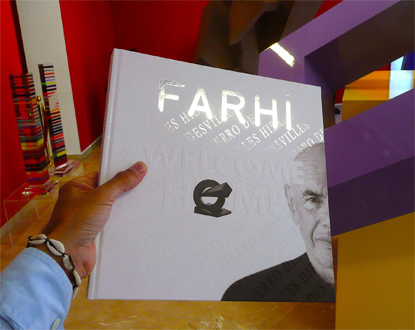For his return to Nice with his major solo exhibition, until September 22, Jean-Claude FARHI has chosen the HIERRO DESVILLES ART GALLERY. Thus, FARHI has returned to Nice, “for an undeniable demonstration of talent and vitality.”
Since 1959, the year of his first exhibition in Nice, where he met Arman and César and other artists of the School of Nice, FARHI’s journey, recognized as one of the most important sculptors of his generation, has taken him across Europe alongside César, to New York where, on Arman’s advice, he developed his large-scale sculptures and monumental works, and even to Asia, alternating between solo and group exhibitions in the best international galleries and museums.
This artistic journey also took him through the different materials he used throughout his career. After his “motorcolors” in 1966, which caught the eye of the influential art critic Pierre Restany, came “Chromplex” in 1968, his plastic and metal sculptures, exhibited at the Galerie Iris Clert in Paris, which brought him national and international acclaim. Then in 1968, he took on plexiglass, a new material hard like marble and transparent like crystal, allowing him to precisely execute his geometric constructions with sharp contours and pure profiles (disks, prismatic steles, columns, cylinders). Finally, in the 1990s, he adopted the use of raw steel for more complex outdoor sculptures.
These years were marked by significant achievements, from the retrospective at the Maeght Foundation in 1973, to the FIAC at the Mamac, from “New Canaan” (Connecticut) to the grand gardens of Gunther Sachs, up to the installation of “Secret Point,” a 12.07-meter monumental work in corten steel at Saint Paul de Vence.
Today, his works are part of major museum and private collections (Duran-Ruel, Sachs, Saint-Laurent) and public commissions installed in Beijing, Palm Springs, Budapest, Antwerp, Cannes, Nice.


